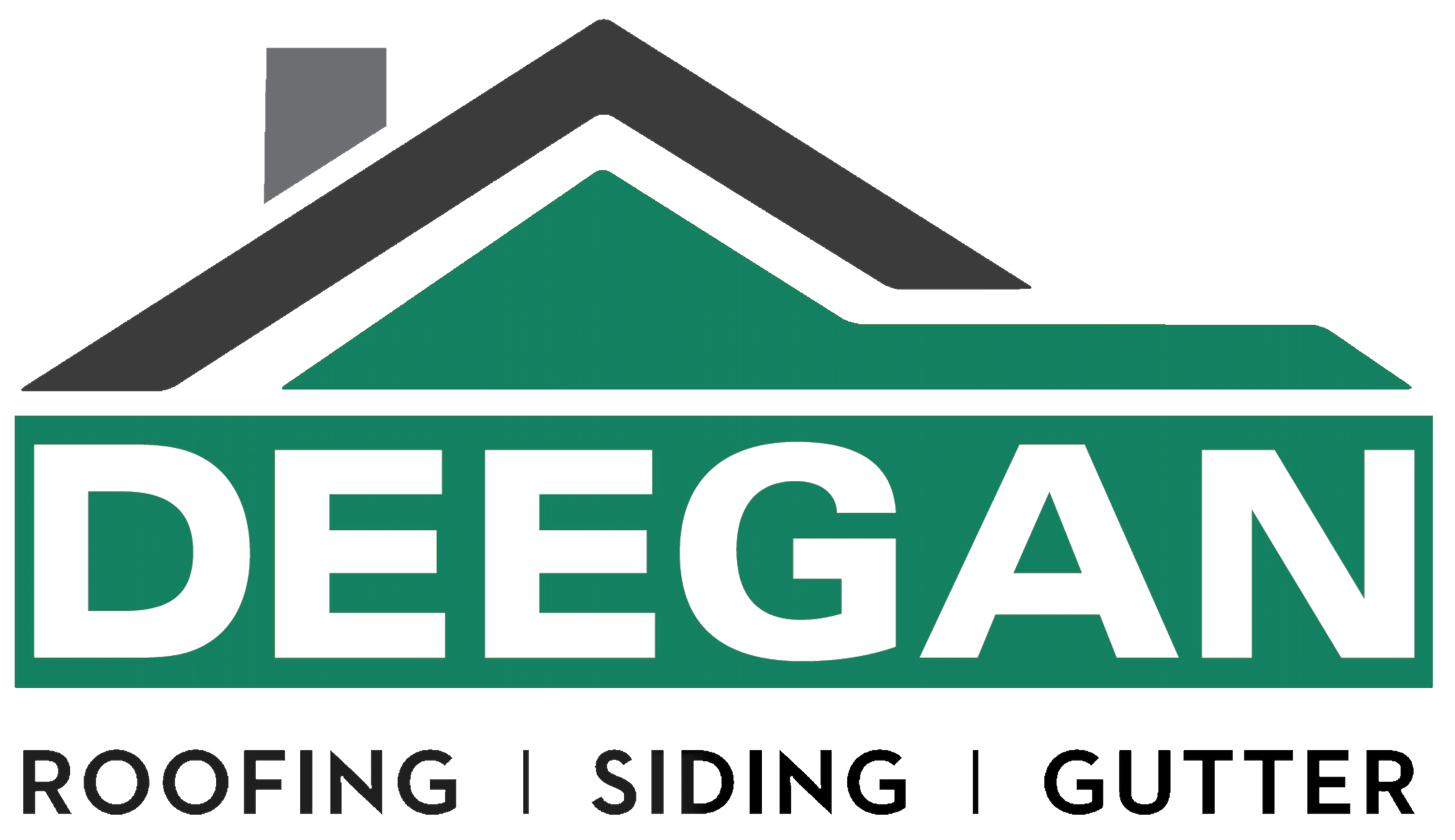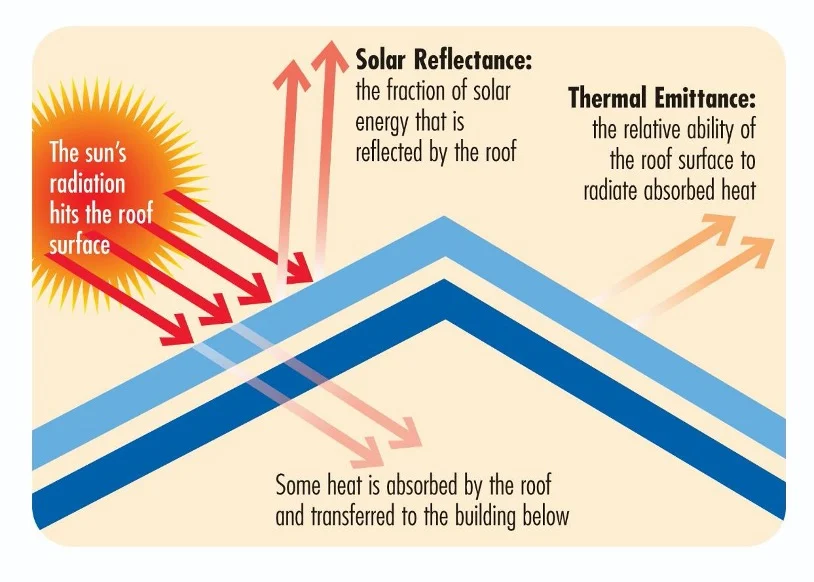Energy efficient roofing is not a new concept. Roof products have been able to qualify for an Energy Star label since 1999. However, a recent larger global focus on sustainability, along with monetary benefits for the consumer, have resulted in more consumers gravitating towards this type of roofing in the past few years. At Deegan Roofing, we have been manufacturing metal roofing for over 20 years and have seen the industry recently lean towards energy efficiency and cool metal roofing.
Cool Metal Roofing
If you have been considering a cool metal roof or are just learning about them now, we want to keep you informed. After reading this article, you will have a better idea about what a cool metal roof is and if having a cool metal roofing system is right for you.
A cool metal roof is a roofing system that delivers higher solar reflectance. Compared to asphalt shingles, the temperature of a cool roof stays lower on very hot days than a conventional roof. This reduces the need for air conditioning, which also lowers the electric bill. The benefits of Cool Metal Roofing is that the homeowner energy savings of 7% up to 15%, reducing potential blackouts and power outages and reducing power plant emissions like carbon dioxide, nitrous oxides, or sulfur dioxide. Additionally, there are tax incentives up to 30 percent of the cost of the roof. A Cool Metal Roof provides excellent insulation during cold winter months.
What Is Solar Reflectivity?
Solar Reflectivity (SR), or reflectance, is one of the factors that is taken into consideration with cool roofs. SR is a material’s ability to reflect solar energy from its surface back into the atmosphere. The SR value is a number from 0 to 1.0. The lower the number, the more a material absorbs solar energy. A surface that reflects 65% of sunlight has a solar reflectance of 0.65. Most dark roof materials reflect 5 to 20% of incoming sunlight, while light-colored roof materials typically reflect 55 to 90%. A material with an SR value of 1.0 indicates a material that has total reflectance.
What Is the Solar Reflectance Index?
The Solar Reflectance Index, or SRI, is a measure that combines a constructed surface’s ability to reflect solar radiation and emit thermal radiation. It’s used as an indicator of how hot a surface will become when exposed to solar heat. SRI is on a scale from 0 to 100. Materials that are highly reflective will have a higher number on the scale as they can remain cooler in sunshine. SRI can be calculated based on the pitch of a roof, solar reflectance, thermal emittance, as well as the weight of the roof and its aging characteristics.
Emissivity
Another factor to consider with a cool metal roof is emissivity, which is a measure of how efficiently the roof surface and metal panel releases the absorbed sun’s heat that’s optimal for creating a normal roof temperature. The level of emittance capabilities of a metal roof is important to know as it can be a concern for solar panels, cool roof coatings, and roof installation.
Does Color of a Metal Roof affect Energy Efficiency?
A lighter colored roof is more effective at decreasing your energy bill more than a dark colored roof. This is because the lighter colors reflect the heat of the sun more, which helps keep the roof from being exposed to intense heat. There’s a reason why you don’t see many black roofs in the desert. A dark colored metal roof or shingle roof, such as black, will get hotter than a roof in a lighter color because the dark color absorbs more heat.
Take your local weather conditions into consideration before deciding on a metal roof color. There are plenty of cool and mild climates where a black metal roof is a great choice. Talk to your Deegan roofing contractor to see if the location and climate of your building is a great fit for a cool roofing system.
LEED Certification for Cool Roofs
The LEED, or Leadership in Energy and Environmental Design, certification program is the leading international program for sustainable building design and construction. A cool roof can become LEED certified as long as it meets the Leadership in Energy and Environmental Design (LEED) requirements. The benefits of a LEED certification has benefits for both contractors and homeowners. Homeowners can reap the rewards of energy savings while contractors can get an advantage over competition by marketing that they construct eco-friendly, LEED-certified buildings.
Knowing the pitch of your roof is important when determining if your cool roof is eligible to become LEED-certified. In order for a cool roof to meet LEED requirements, a roofing material must have an SRI of 29 or higher for any roof with a pitch that is greater than 2:12. If the pitch is 2:12 or less, the SRI value must be 78 or higher.
Cool Metal Roofing: How Energy Efficient Roofs Bring Savings
Metal has become one of the main materials associated with cool roofing because of its sustainability. In comparison to other types of roof coating and materials, such as asphalt shingle roofs, a cool roof serves as an excellent radiant barrier especially for buildings located in hot climates. There are seemingly endless benefits to a cool metal roof including: Energy efficient metal roofing comes in a large variety of profiles that meet the needs of different budgets. Start by discovering which type of roofing profile is best for you.
Contact us Phone: (908) 322-6405
Deegan Roofing can perform an inspection of your roof and repair any damage. We are family-owned and operated, Deegan Roofing Company has been installing and servicing residential and commercial roofing customers in the New Jersey area for over 30 years. If you are concerned about your roof surviving the upcoming winter weather or are currently experiencing roofing problems, it’s never too late to contact Deegan Roofing to get your roof inspected before winter. Website https://www.deeganroofing.com/ Address: 345 Terrill Rd, Scotch Plains, NJ 07076 Hours: Open 8:30 AM ⋅ Closes 5:30 PM

